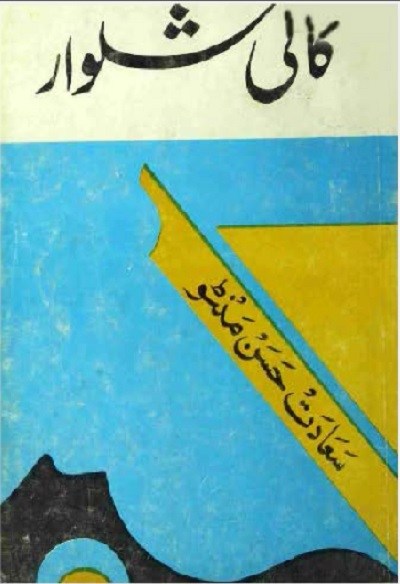

The controversial short story collection Dhuan (Smoke) came out during this time, as did at least one edition of Manto ke Afsane.

In addition he persisted in writing and publishing his short stories as well as, although they provoked a variety of reactions among readers and critics. In only eighteen months, no fewer than four of his collection of radio plays, Ao (Come), Manto ke Drame (Manto's Dramas), Janaze (Funerals) and Tin aurraten (Three women) were published. Judging from the number and variety of collections Manto had published in Delhi, this was a "golden period" indeed for him. Whatever literary influences may have rubbed off on Manto during his tenure at All India Radio, his personal relation with the writers he met there were, not surprisingly, quite varied. Akhtar Hussain Raipuri, Ansar Nasiri, Mahmud Nizami, Kirshan Chander, Miraji and Upendranath Ashk. During his stay at All India Radio, Manto had the good fortune to be acquainted with many of these writers, including among others, Chiragh Hasan Hasrat, Dr. In 1941 he came to Delhi and accepted the job of writing for Urdu Service of All India Radio. In late 1936 he accepted an invitation to edit the weekly Musawwir (Painter) and justify Lahore for Bombay. However, he soon tired of the paper's "yellow journalism" policies. Later he came to Lahore and joined newspaper Paras (Philosopher's Stone). Later this, story 'Tamasha" and several others were put together into Manto's first collection of original short stories in Urdu, 'Atish Pare" (Sparks also Quarrel-Provokers), published in 1936. While there, Manto also continued to try his hand at original short stories in Urdu, at least one of which "Inqlab Pasand" (Revolutionary), dated March 1935 was published in the Aligarh Magazine. Having now become a published author, Manto aided by Hasan Abbas soon attempted a translation of Oscar Wilde's Vera, which was published in 1934.īesides encouraging the, young Manto to translate good European literature into Urdu, Bari also urged him to return to his earlier literary inclination and begin writing himself in Urdu. Manto completed the translation in about two weeks and sold it to the Urdu Book Stall, Lahore, which published it under the title Sarguzasht-e-Aseer (A Prisoner's Story). During this time Bari enthusiastically discovered Hugo's The Last Days of Condemned, a drama expression opposition to capital punishment, and he encouraged Manto to attempt a translation of it into Urdu. Manto discovered the works of such leading writers as Victor Hugo, Lord Layton, Gorky, Chekhov, Pushkin, Osar Wilde, Maupassant and others. Under the direction of Bari, who moved back and forth between Amritsar and Lahore as he changed jobs.


#Manto urdu stories movie
During his early days of Amritsar he met an itinerant journalist, Abdul Bari Alig, who soon changed the young man's imaginary dabbling with revolution into genuine interest in politics and more importantly their enthusiasm for movie stars into fascination with nineteenth century French and Russian literature, which was now becoming available in India in English and Urdu translation. Throughout his school years, Amritsar, like the rest of the Punjab, had experienced considerable civil unrest and political activity as the independence movement began to grow. He received his early education at Muslim High School in Amritsar. Saadat Hasan Manto, a great short story writer of South Asia in Urdu, was born on May 11, 1912.


 0 kommentar(er)
0 kommentar(er)
